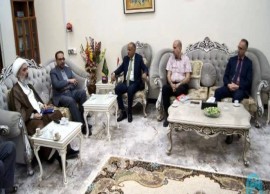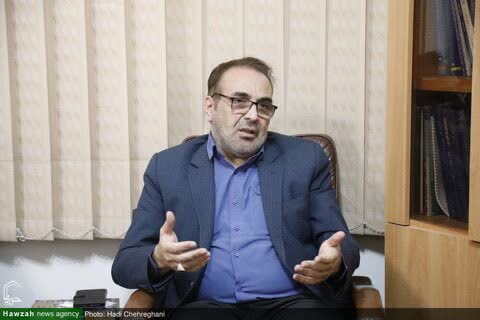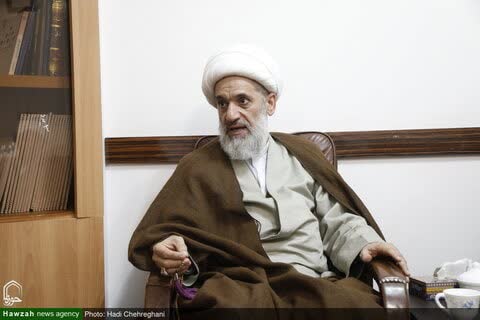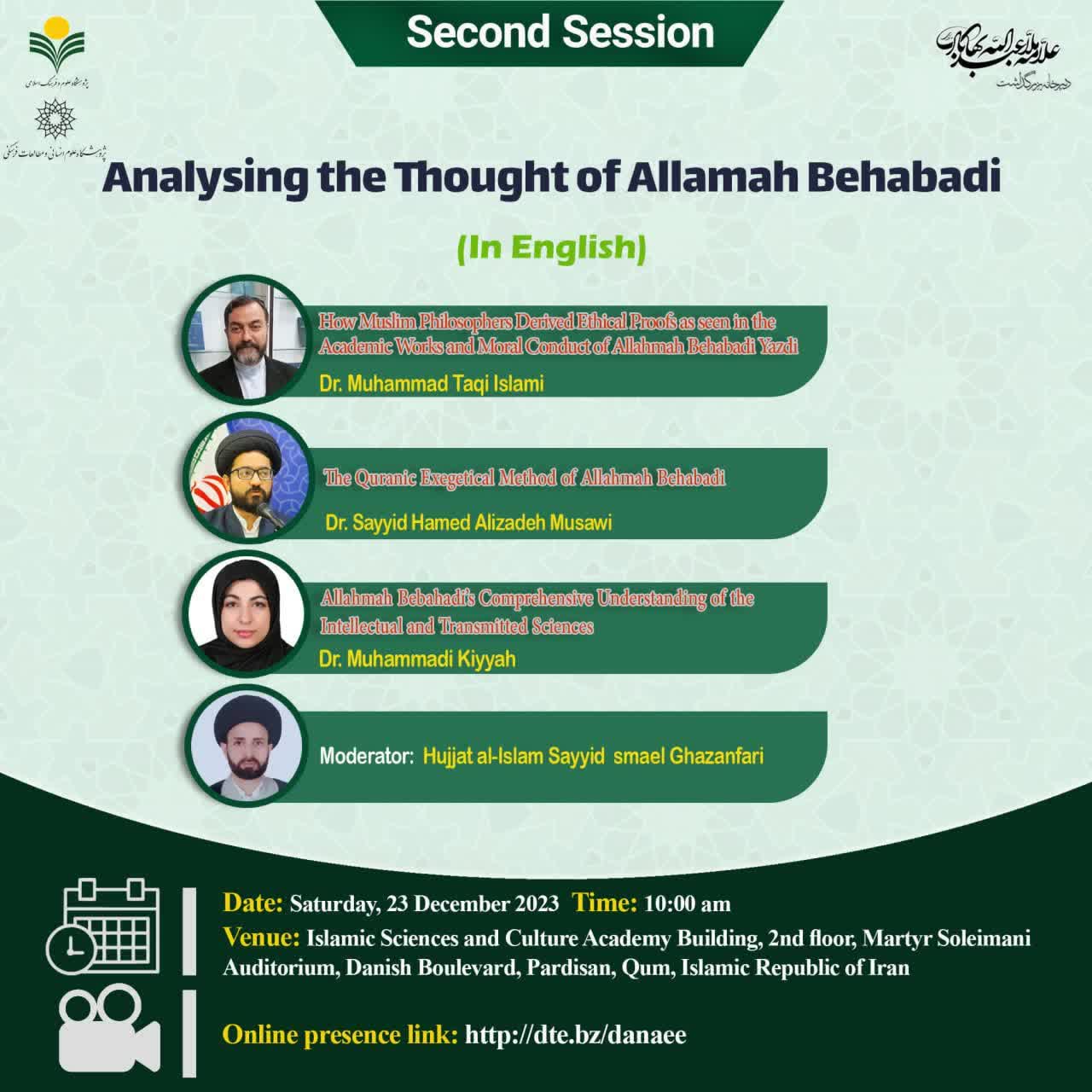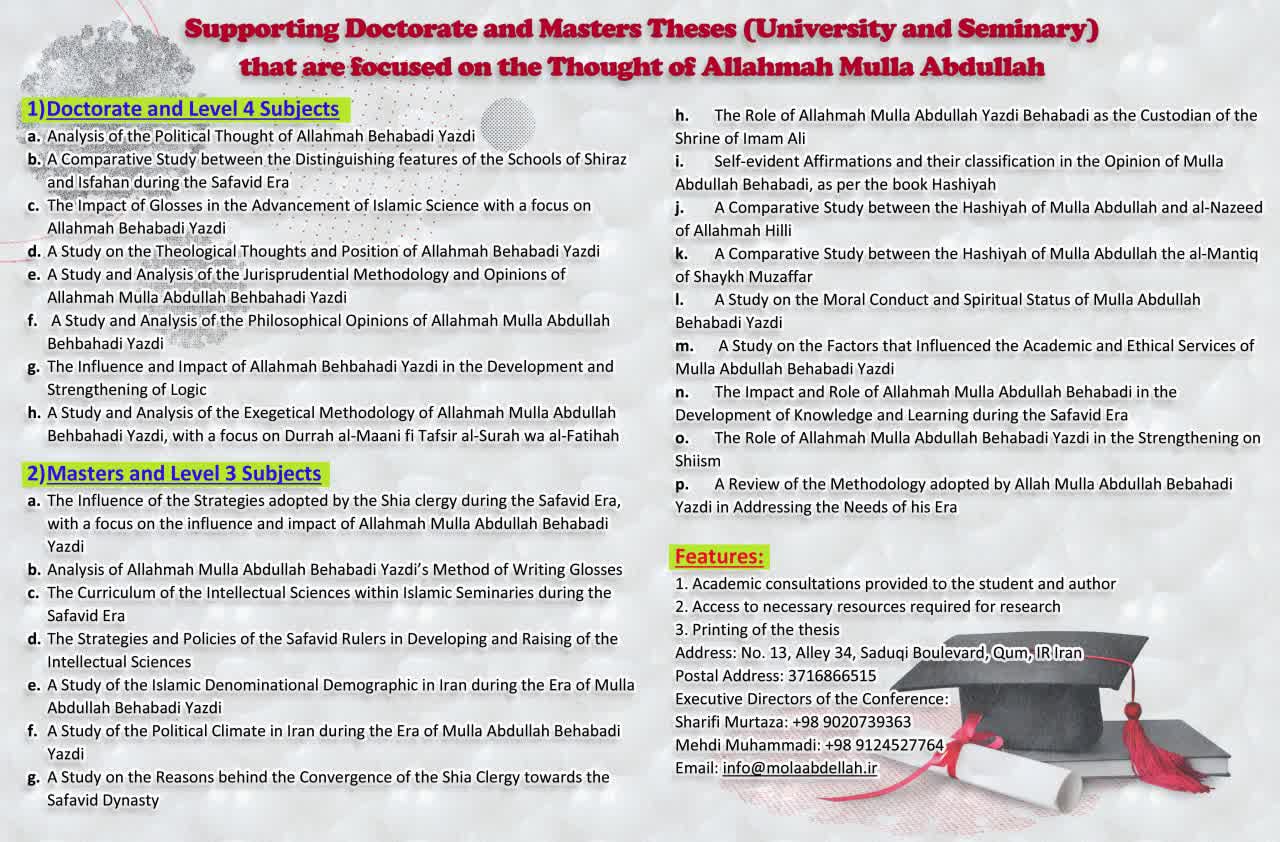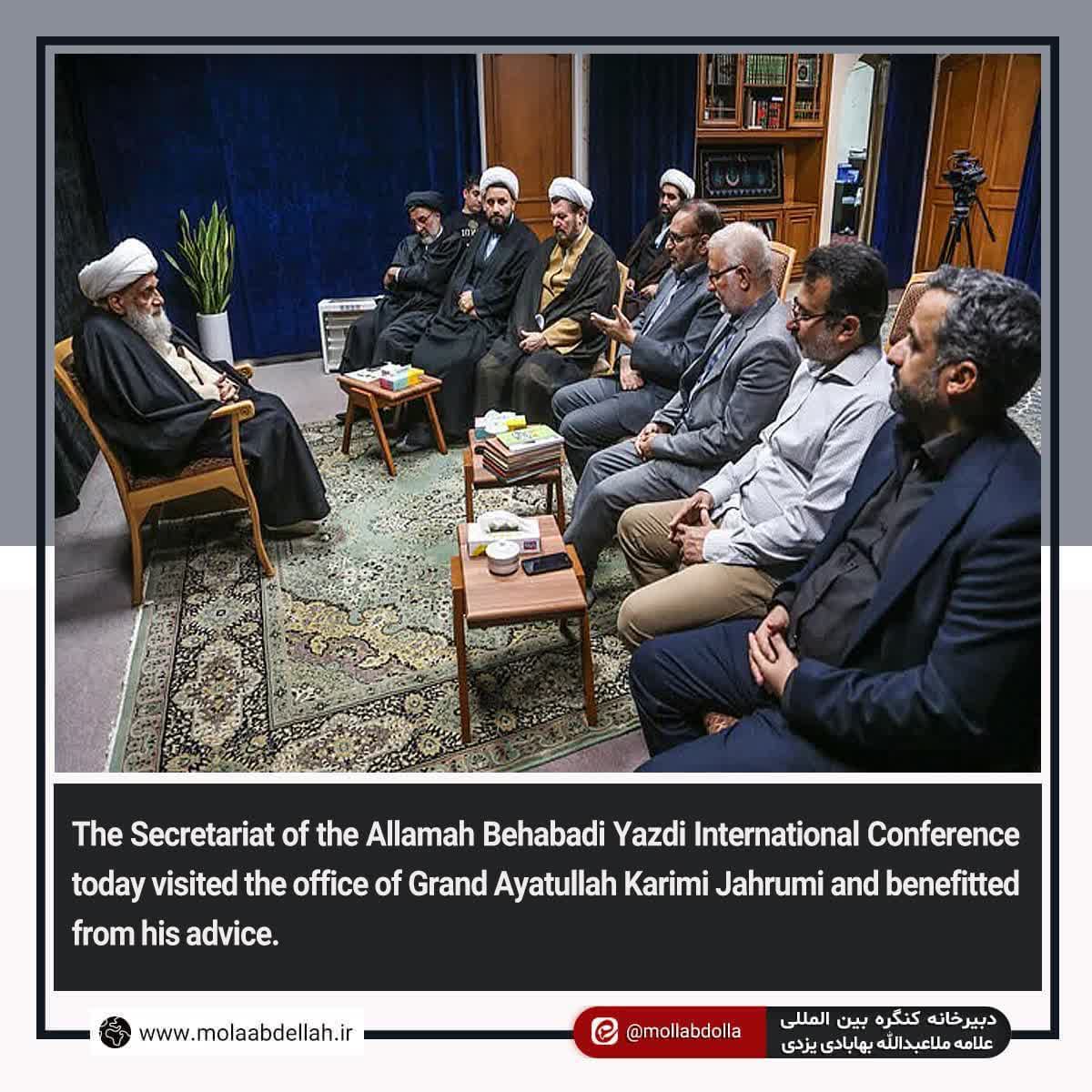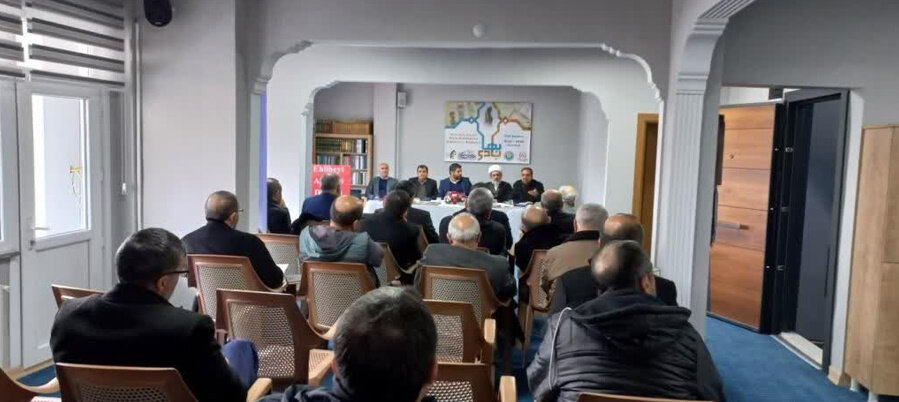In 981 A.H., scholar, researcher, logician, custodian of the shrine of Amir al-Mu'minin Mullah Abdullah bin Shahabuddin Hossein Yazdi Bahabadi died and was buried in the porch of the shrine in the basement where Azd-Dula Dilami was buried [1] located between the threshold of It is located in the first door and the threshold of entry in the second door from the east.
Accurate identification of the burial place of Allameh Bahadi Yazdi (RA)
Mulla Abdullah Al-Izdi - 981 A.H. - 1573 A.D
In 981 A.H., scholar, researcher, logician, custodian of the shrine of Amir al-Mu'minin Mullah Abdullah bin Shahabuddin Hossein Yazdi Bahabadi died and was buried in the porch of the shrine in the basement where Azd-Dula Dilami was buried [1] located between the threshold of It is located in the first door and the threshold of entry in the second door from the east.
His jurisprudence has stories in Najaf. As a result of his good morals, good management, conduct, and his high position, he became the treasurer of the shrine of Amir al-Mu'minin, peace be upon him. Our sheikh Muhammad Harzuddin described it like this and said:
It is known that Safavid Shah Tahmasab brought him from Iran to Iraq to take charge of the shrine and handed over the key to the shrine and the treasury of precious ancient objects and the large treasury containing waqf weapons. which were prepared to defend the shrine, and in general, Najaf Ashraf was in danger from the raids of the Bedouins. And Shah Tahmasb built a school for him in Najaf on the northwest side of it, located in Al-Mashiraq area, around the houses of Hazrat Al-Kumuna, and today, in the year 1295 AH, there is no trace of the school left. And he brought him birds from India, which are known as shrine birds in Najaf, and sometimes as Turani birds.
When Sultan Murad Osmani came to Najaf and was honored to visit the shrine of Amir al-Mu'minin, peace be upon him, he kept Mullah Abdullah in charge of the Alawi shrine because of his good management and behavior and executive services. The custody of Alavi shrine remained in the hands of his children and descendants until the time of Mullah Yusuf who died in 1270 AH in Najaf.
Among the works left behind by Mulla Abdullah Bahabadi: Hashiya Al-Khataei and Hashiya Al-Mutiq by Allameh Taftazani, which today is known as Hashiya Mullah Abdallah, has a Hashia Al-Khataei that he finished at the end of the month of Dhu Qa'dah in holy Mashhad, and margins on the description of Shamsiya and the description Jurisprudence and numerous other references have been quoted from him.[2]
984 AH - 1576 AD, Najaf Ashraf
In this year, Shah Tahmasb Safavi passed away, and after his death, signs of destruction and neglect were visible in the city of Najaf. The Shah took great care of this city and Najaf reached the peak of construction and settlement during his time, he had built six to seven thousand houses in this city.
992 AH - 1584 AD [3]
In the month of Safar of this year, Sheikh Ahmed bin Muhammad Ardabili, known as the holy Ardabili, passed away in Najaf Ashraf and was buried in the cell adjacent to the southern minaret in the section of the Al-Nafais al-Kabira treasury.[4]
[1] The researchers of Sheikh Mohammad Herzuddin say: What we have come to and it is also known is that the tomb of Azd al-Dawlah is at the end of the corridor under the second gate next to the holy shrine of Amir al-Mu'minin, peace be upon him. And the corridor extends from the first eastern gate to the threshold of the two gates. On both sides of that vestibule - under the floor of the eastern arch, on the right side of the entrance and on the left side of the first eastern door - there are sixteen vestibules that extend on the eight by eight Qibla line.
[2] Tarikh al-Najaf al-Ashraf, author: Abdul-Zaraq Harz al-Din, part: 2, page: 274, and Maarif al-Rajal: 2/4.
[3] Iraqi topics: 1/93. Al-Muqadsah al-Utbat al-Muqddassa (Qasm al-Najaf): 1/202.
[4] History of Al-Najaf Al-Ashraf Author: Abd al-Zaraq Harz al-Din, Part: 2, Page: 276 and Ma'arif al-Rijal: 1/53.



